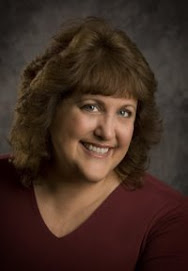It's easy to create Q & A's or FAQ's -- use simple questions that all readers want to know about writers, and write brief, sincere responses to them. Examples of commonly asked questions include: What was your inspiration for this novel/book? How long did it take you to write? Who are your favorite authors and why? What is your next novel/book about?
Once you have a list you like, send it with a jpg of the book cover art, an author photo, and other information about your book (ISBN number, ordering information, links to websites, etc.). It's good protocol to follow the blogs where your information is posted and to include links to that blogsite or website on your own sites. Also, don't forget to thank those who agree to post information about you and your book after the post has run.
Here is a sample FAQ I use for my own novel, Coyote Heart:

Coyote Heart by Paula Margulies
ISBN: 1-933794-16-X
Publisher: Kirk House Publishers, April 17, 2009
$15.95
www.amazon.com
www.kirkhousepublishers.com
www.paulamargulies.com
Frequently Asked Questions
1. How long have you been writing fiction?
I started writing fiction about nine years ago, when I was in my mid-40’s (kind of a mid-life crisis, I suppose). I was an English major in college, but I studied composition and teaching, and had never taken a creative writing class.
I started writing fiction about nine years ago, when I was in my mid-40’s (kind of a mid-life crisis, I suppose). I was an English major in college, but I studied composition and teaching, and had never taken a creative writing class.
2. Where did you learn fiction-writing?
In 2001, I took an Intro to Creative Writing course at Mesa College. I wrote a few short stories that won some awards, and took one of them to the San Diego State Writer’s Conference in 2003, where it won the Editor’s Choice Award from Brenda Copeland, who was then an editor at Simon and Schuster. She suggested that I try writing novels instead of short stories, and I decided to take her advice.
3. Where did you get the idea for this novel?
I had the idea for a short story about a married woman who falls in love with a Native American man. I don’t know where this idea came from, but I kept seeing the image of the husband, who I imagined had been in an accident of some sort, sitting in a chair with a rifle in his hands and his arms raised up in an Indian victory gesture. This image haunted me so much that I began a story about it, and that evolved into the novel, Coyote Heart.
4.How long did it take you to write this novel?
One and a half years.
5. How long did it take to get the book published?
I began Coyote Heart (then called Bow and Arrow) in 2003 and finished it in 2004. In January 2005, I took it to the SDSU Writer’s Conference, where it won an Editor’s Choice Award from Shaye Areheart, an editor at Crown Publishers. I met my agent, Bob Tabian, at the same conference, and in 2008, I was offered a royalty contract by Kirk House Publishers.
6. How did you find your publisher?
After the book made the rounds with the bigger publishing houses from 2005 – 2007, I submitted it to some university and smaller presses. One of them, University of Nevada Press, held it for one year and almost took it (it made it through internal and external reviews, but the editorial staff passed on it in a final publishing meeting). Kirk House was one of the small presses originally approached in 2007; they extended an offer in 2008.
7. Do you have a favorite character?
I read somewhere that an author should love all the characters in her novel, and I feel that way about this one. They are all flawed and all have suffered some kind of loss, which makes me feel for each of them, but if I had to pick one, it would have to be the husband, Everett Weedman. He is a rational man, who likes order and logic in his world yet, at the same time, he has a deep love of nature and he’s willing to sacrifice for what matters.
8. What is your next novel about?
I am working on an historical novel called Favorite Daughter, which is about Pocahontas, who tells the story in first person, in her own point of view. I recently read Sena Jeter Naslund’s novel, Abundance, which tells the story of Marie Antoinette in her own voice and was fascinated by the way it dispelled so many myths about her character, while showing us who she really was as a person. I’m trying to do the same thing in Favorite Daughter, by telling the story from Pocahontas’s perspective and letting her show us the true nature of her relationship with John Smith and how she came to play such a significant role in American history.







